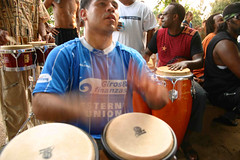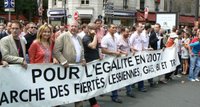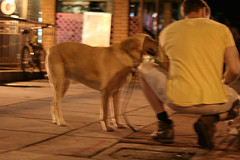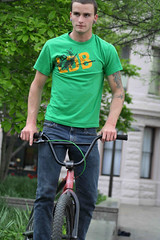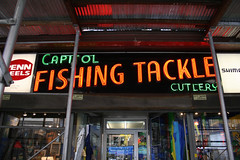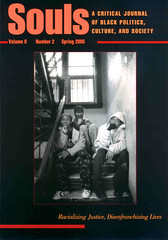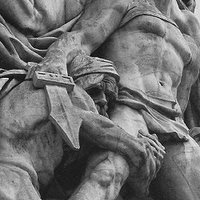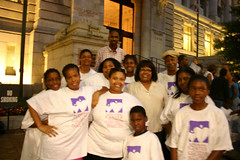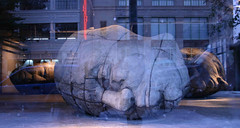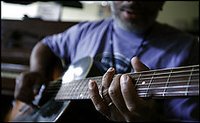
On
10 June 2006, I had hoped to trek out to Bunker Hill Road in NE WDC for the expressed purpose of visiting and capturing blues musicians performing at the
Archie Edwards' Barbershop. But did not make there. Since then I have contemplated getting out there before it's too late. Apparently, time is running out.
Washington Post Metro Columunist Marc Fisher and his son recently visited the barber shop and would publish the following article in the Sunday, 30 July 2006 issue of the Washington Post.
A Barbershop of Chords but No Cuts Is Hanging On by a StringWashington PostBy Marc FisherSunday, July 30, 2006; Page C01In a dark barbershop on Bunker Hill Road, streaks of summer sun slant across acircle of guitar pickers. It's Saturday afternoon in Archie Edwards's old storein Northeast Washington, and an environmental lawyer, a Methodist minister, amaintenance man, a robotics researcher and a 10-year-old kid who's never beforeplayed the blues are traveling down the river together, a thousand miles awayfrom the hot city.
The Archie Edwards Blues Heritage Foundation's weekly jam session is underway.Door's open, there's a stack of plastic chairs in the back and you're welcometo widen the circle. Might want to hurry in, though, because the owner of thebuilding is fixing to sell it. All summer long, the situation has generatedenough anxiety that somebody might have to write a blues number about it.
Store's closed all the time except Saturday afternoons. That's when MichaelBaytop and a couple of the other gents who used to hang out at Edwards's AlphaTonsorial Barbershop unlock the door and take a seat. Over the next few hours,guitars will wander in, maybe a flute, surely a couple of folks withoutinstruments, newcomers who might just pick up a washboard and join in.
Back when Edwards was alive, Baytop would stop in around noon, when theproprietor was busy with the razor. "At about 2 o'clock he'd say, 'Okay, donecutting hair for today,' " Baytop recalls. "Somebody would say, 'I've beenwaiting two hours,' and Archie would say, 'You can come back Monday.' "
Now there's only one barber's chair left in the place, a shiny green swivelchair that hasn't generated a dollar in haircut revenue since 1998, when Mr.Edwards passed. Baytop had spent a dozen years of Saturdays learning theacoustic Piedmont blues and listening to the old guys' stories, and he wasn'tabout to let that go. He and some of the other players decided to keep thebarbershop going."
Everybody told us we were crazy: 'You don't know nothing about running abarbershop,' " Baytop remembers. "I said, 'That's okay. We're not going to cutany hair.' "
Somehow, the place just kept going. The old musicians -- some of the top namesin D.C. blues history -- welcomed any and all. Saturdays became a time forplaying, teaching and just wading in the music. Star players from across thecontinent showed up. So did film crews from Finland, Japan, Israel.
When the rent on Edwards's shop came due, the players took donations.Eventually, they made some CDs and organized some concerts to meet the rentbill, which was $100 a month when Edwards died. These days, it's $300, whichjust about covers the property tax and certainly nothing more. Which is why thetrustees for the owner, an aged woman named Helen Loftus, have decided it'stime to sell.
"Her trustee decided to liquidate her assets," says Ray Ruppert, the real estateman who manages the property, which is on a quiet little retail stripconsisting of a security agency, a law office, a balloon shop, an Africanculture center, a dentist and a dance school.
"When I asked Mr. Ruppert if he'd thought about donating the place to us, he laughed and said, 'That's what I thought we already did,' " says Patrick Casey,a lawyer from Chevy Chase who spends his Saturdays playing slide guitar at the shop.
One of Baytop's relatives, Jeff Sibert, an ex-barber himself, has proposed tobuy the property, which includes the store next door, and save the barbershop for the blues.
Sibert and Ruppert have just struck a tentative deal, under which Sibert willtry to rent out the adjacent storefront at market rate and use that revenue tokeep the music going in the barbershop, which he would renovate.
In a city where rents seem rocket-propelled and retailers hungrily snap upalmost any space, the barbershop has managed to sit unchanged. Two bottles ofelectric green Jeris Hair Tonic sit on the shelf, just where Edwards last usedthem. There's a black-and-white TV under the mirror and a 1950s radio consoleup front.
On the wall in the back, some old jottings of Edwards's are framed,lyrics to a song about John F. Kennedy, and some other lines, too: "If youdon't like my peaches, why don't you stop shaking my tree; if you don't stopshaking my tree, just come out of my orchard and leave my peaches to me."
A coffee can labeled "Donations" sits on the shelf. There's maybe $6 in it.
"It's not like the symphony with its patrons," Baytop says. "People who love the blues got the blues."
As word spread about the real estate situation this summer, local musicians called and wrote with support. There have been crises before, and every timethe shop is threatened, "no matter what we've needed, it's almost like theBible said, 'Speak and ye shall be given,' " Baytop says. When the societyneeded to set itself up as a nonprofit group, "I swear, guy walks through thedoor, harmonica on his hip, and he's a lawyer working with nonprofits and heasks if we need any help with that. His firm gave us $7,000 of legal work."
Miles Spicer, a guitar player and treasurer of the foundation who works forCareFirst BlueCross BlueShield, keeps a mental catalogue of the foreignvisitors who drop by and then head home to spread the gospel of the barbershop. "They come back every year or two, or they send their friends," he says. "And some of them come to play with us. Most anyone can learn this; if you fall inwith the right people and turn off the television, it doesn't take long."
My son, who is 10, plays a bit of piano but hadn't attempted the blues. The barbershop adopted him, and inside of 20 minutes he was leading a dozenmusicians in an extended jam.
Jim Lande, the clarinet man, who carves the wooden bones that anyone who pops incan pick up to join the rhythm section, leans over to tell my son "a little secret: If you get the rhythm right, people don't worry so much about the notes."
Maybe Sibert is the latest in a series of miracles that have kept the home ofthe blues open. Maybe not. But on Saturday afternoons on Bunker Hill Road,there's no anxiety in the air. The rhythm is right, and ain't nobody worrying so much about the notes.
Photo description and credit: Miles Spicer plays with friends during the weekly jam session at the Alpha Tonsorial Barbershop in Northeast. The rent has been $300, but now the trustees for the owner want to sell the property. (By Lucian Perkins -- The Washington Post)
 SHOCK vs AWE is not pornographic. Nor is it about sex, per se. A collection of provocative and erotic self-portraits integrated with hard hitting texts and excerpts from my writings pertaining to my experiences, as a black man. Which are often in sharp contrast to the experiences of my white counterpart. And when I say white counterpart I mean white friends, white colleagues, white associates and white lovers.
SHOCK vs AWE is not pornographic. Nor is it about sex, per se. A collection of provocative and erotic self-portraits integrated with hard hitting texts and excerpts from my writings pertaining to my experiences, as a black man. Which are often in sharp contrast to the experiences of my white counterpart. And when I say white counterpart I mean white friends, white colleagues, white associates and white lovers.
